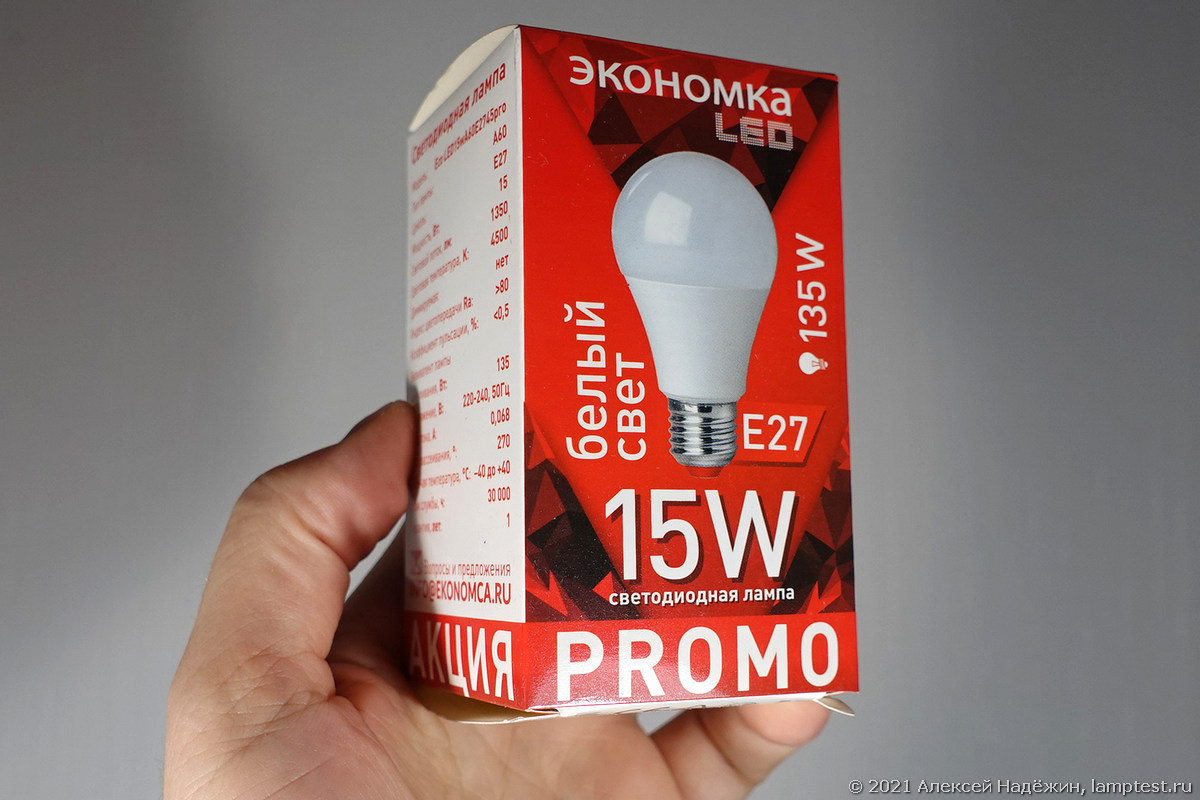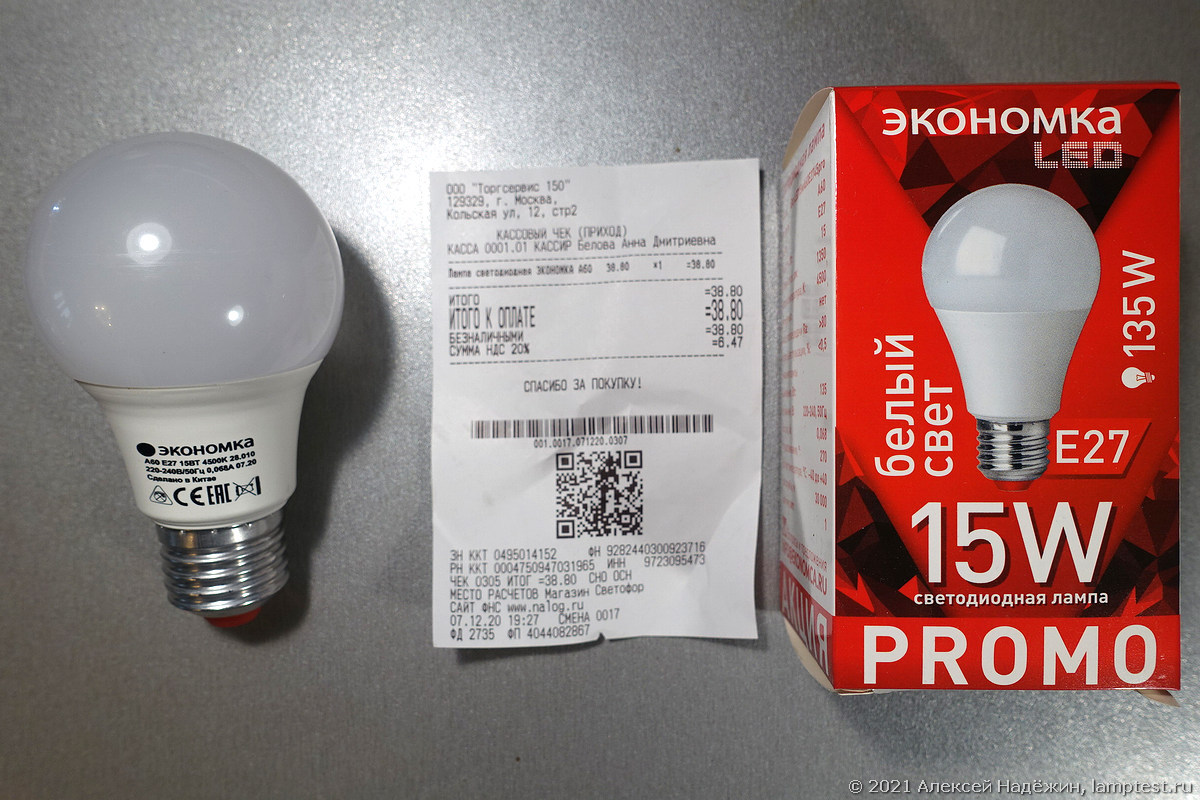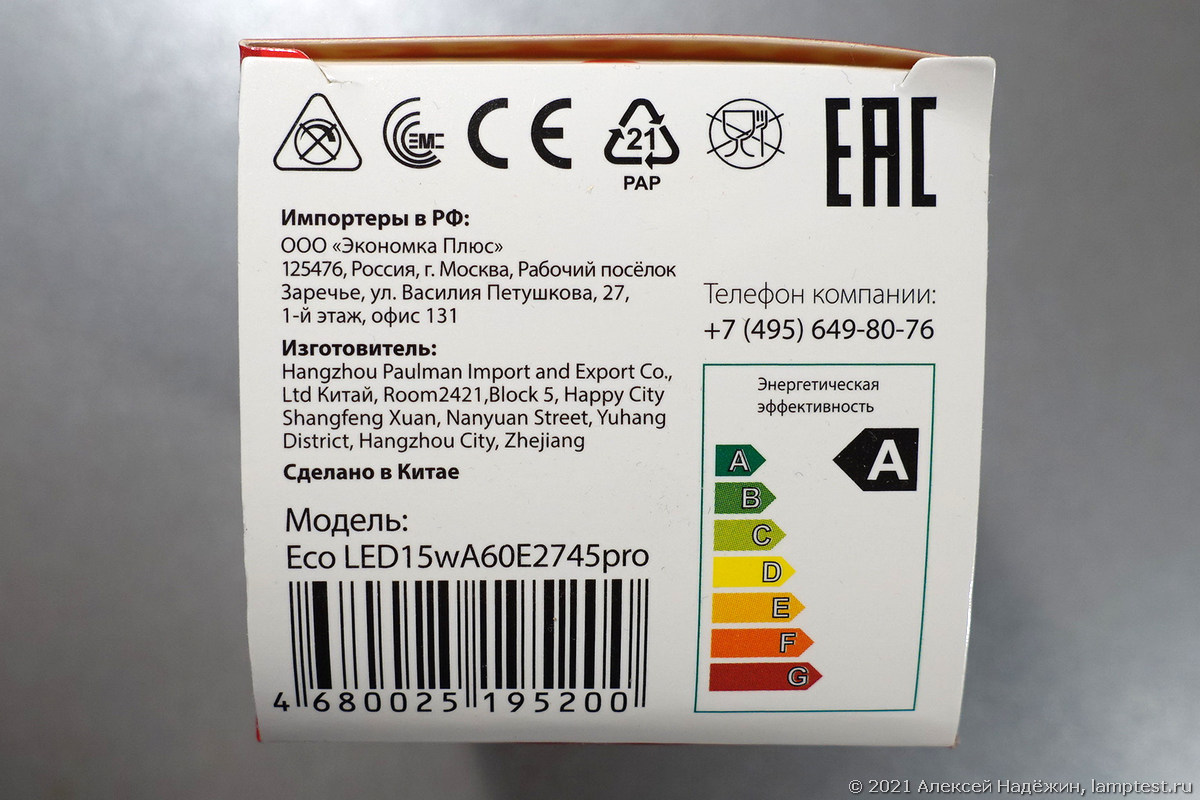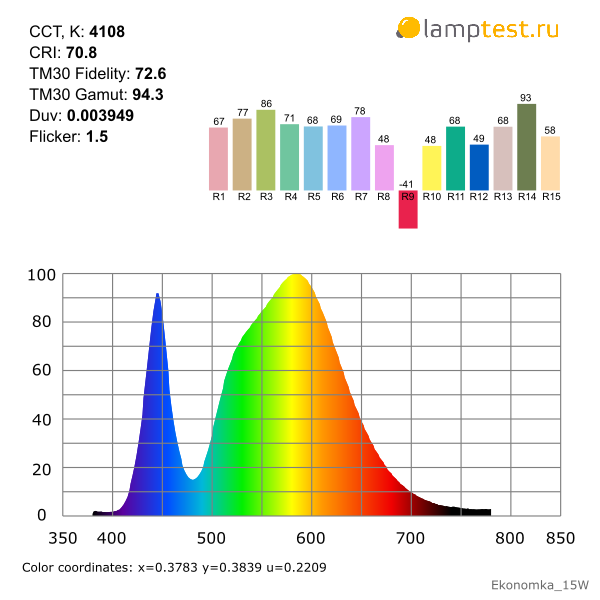In the chain of stores Traffic Light Housekeeper bulbs are sold for 38 rubles 80 kopecks.
The lamp reads "15 W, replaces 135 W, 1350 lm, Ra> 80".
I think you already guess that all this is not true.

As far as I understand, Traffic Light stores only sell one type of LED lamps (you don't have to choose a color temperature and power - only neutral light 4500K, only 15 W). There are also spotlights of the same brand.

I spent 38 rubles 80 kopecks in money for science.

The lamp box says "Power 15 W, luminous flux 1350 lm, color temperature 4500K, color rendering index Ra> 80, ripple factor <0.5, equivalent to 135 W incandescent lamp, voltage 220-240 V, service life 30,000 hours, 1 year warranty" ...

There is already a discrepancy in these parameters - 1350 lm is the equivalent of a 115 W incandescent lamp, not 135 W.
The lamp has a manufacturing date of 07.20.

The manufacturing plant is not specified, only a Chinese intermediary (this is immediately evident by the presence of the words "import-export" in the name).

I measured the parameters of this light bulb after a half-hour warm-up and got the following results.


The measured power consumption is almost half the promised 8.5, not 15 W.
The measured luminous flux at a voltage of 230V is 41% less than the declared one - 794 lm, and not 1350 lm.
The lamp shines like a 75-watt incandescent lamp and will not replace a 135-watt lamp as promised by the manufacturer.
The measured color rendering index turned out to be not> 80, as we were promised, but only 70.8, which means that it is undesirable to use such a lamp for lighting living quarters (it is believed that for such lighting, the CRI (Ra) color rendering index should be higher than 80).
The measured color temperature turned out to be less than the declared one - 4100K, not 4500K, but this is even good - the light is not so cold.
At a supply voltage of 230V, the measured ripple coefficient was 1.5%. This is three times higher than the promised <0.5%, but not scary - the human eye does not perceive such pulsation.
With switches that have an indicator, the lamp works correctly - it does not flash and does not glow weakly when such a switch is turned off.
The lamp uses a linear driver, so when the mains voltage drops to 220V, the brightness of the lamp drops by 5%, and the ripple increases to 9.6%.
According to GOST, the mains voltage in Russia should be 230 V ± 10%, that is, from 207 to 253 V. At a voltage of 207 volts, the lamp brightness drops by 23%, and the light ripple rises to 32%. The lamp “converts” from a 75-watt equivalent to a 60-watt equivalent.
In rural areas, the voltage in the network sometimes drops to 180V, at this voltage this lamp "turns into a splinter" - its brightness drops by 74%, the ripple increases to 36%.
Another unpleasant effect of the linear driver - the lamp reacts by changing the brightness to the slightest changes in the voltage in the network (the light will "twitch" all the time when the voltage is unstable).
During testing, the lamp was connected through an inverter stabilizer Shtil Instab 500, which outputs exactly 230 V. To measure the lamp power, a Robiton PM-2 device was used. The color parameters and the ripple coefficient were measured with an Uprtek MK350D spectrometer; the luminous flux was measured in a half-meter integrating sphere using the same spectrometer. The parameters at reduced voltage were measured using a LATR Suntek TDGC2-0.5 and a Lamptest-1 device.
I don't know how long such a light bulb will last. I can assume that you can not count on the promised 30,000 hours, and at best it will live up to the end of the warranty period, that is, a year.
© 2021, Alexey Nadezhin